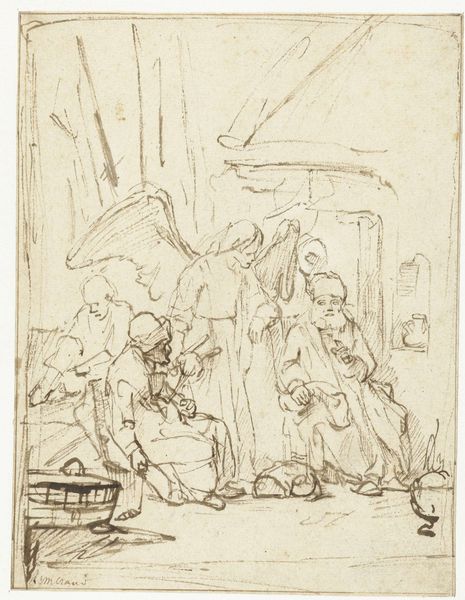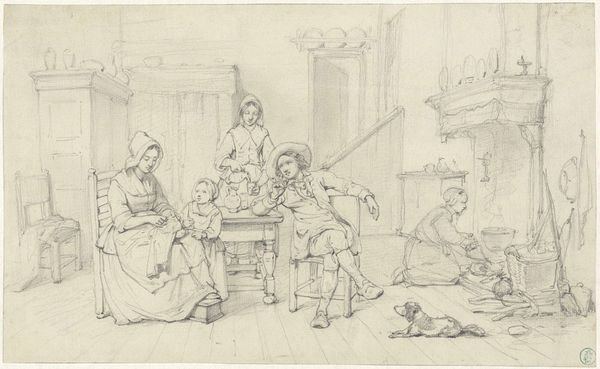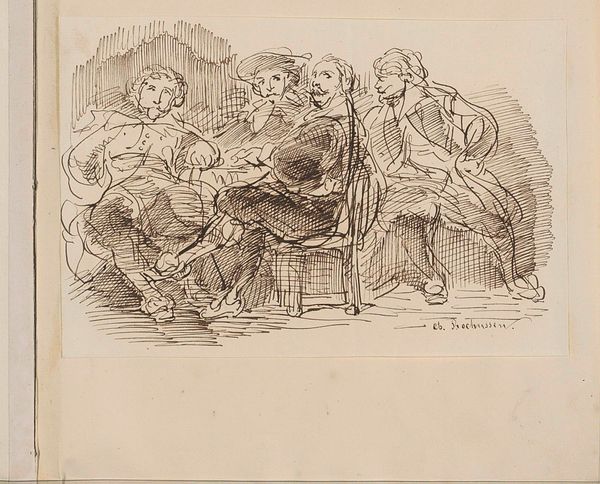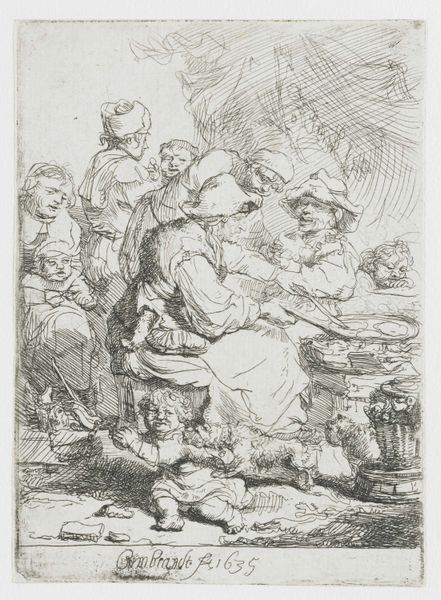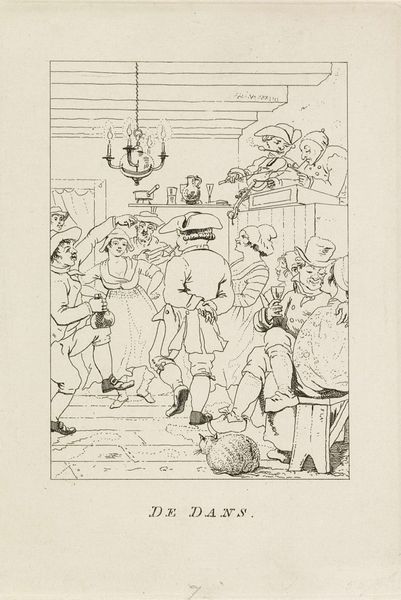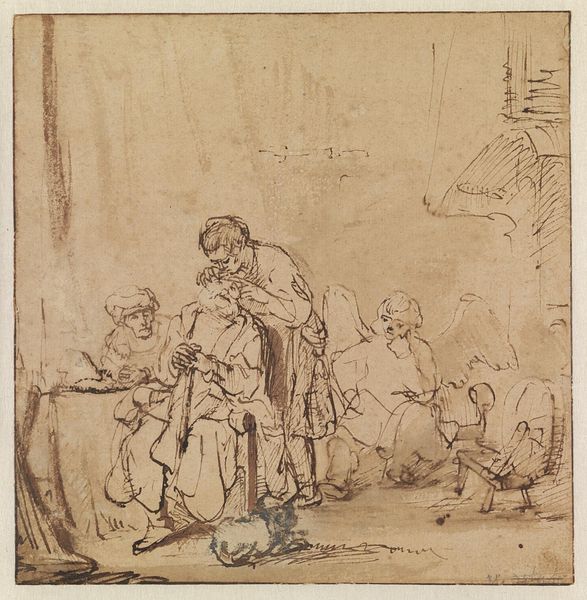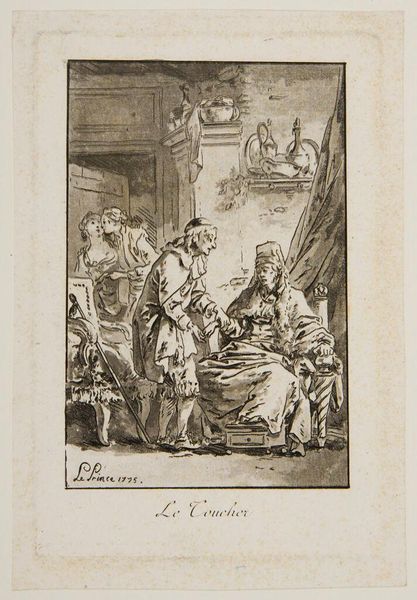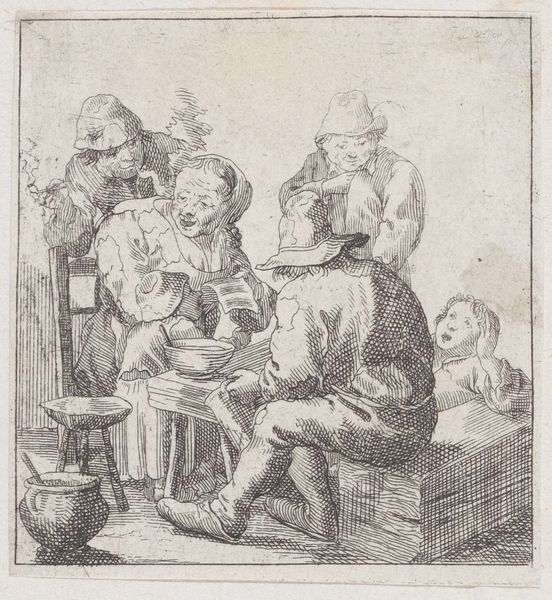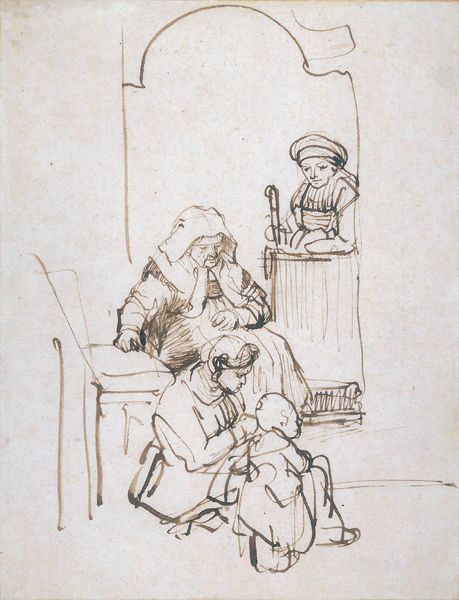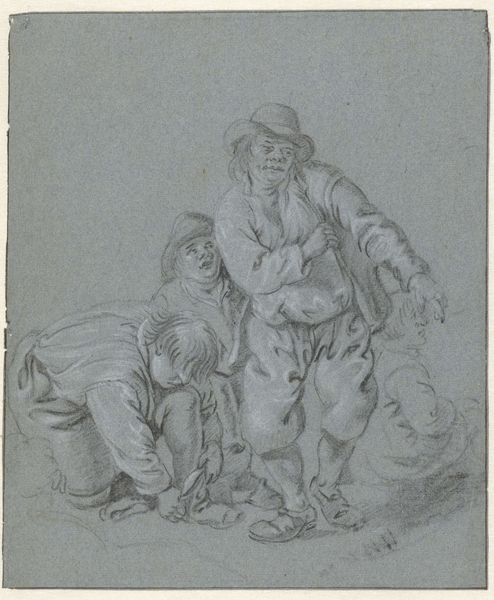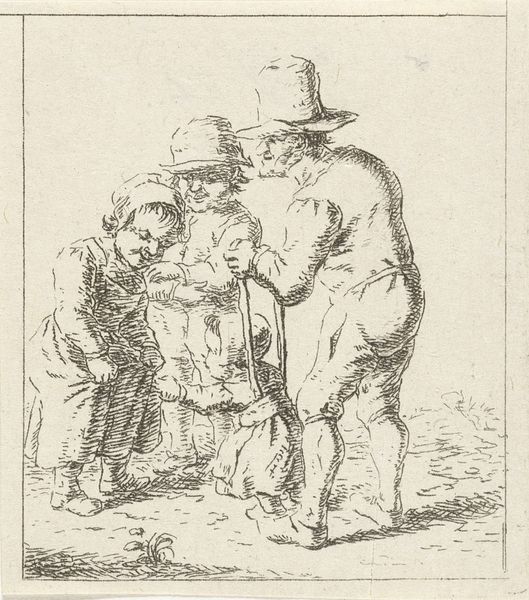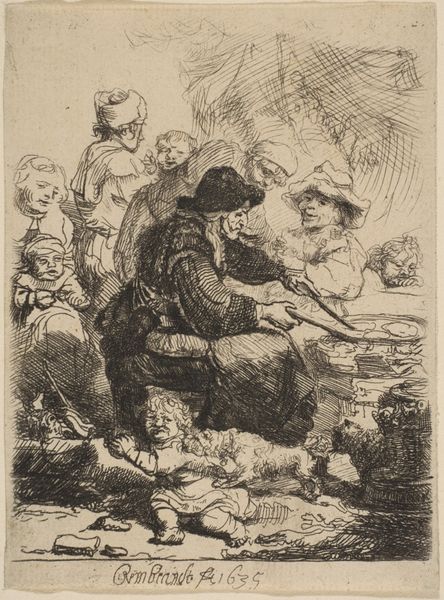
Dimensions: height 143 mm, width 15 mm
Copyright: Rijks Museum: Open Domain
Editor: Here we have Louis Bernard Coclers' "Keukenscène met kinderen," made sometime between 1756 and 1817, an etching in print form. The scratchy lines create an intimate, domestic scene, but there's a slight disquiet to it. How do you interpret this work? Curator: Formally, I find the dynamism in the etching to be its most compelling aspect. The lines are not merely representational; they construct the very texture of the scene, a bustling kitchen. Observe how Coclers uses cross-hatching to define depth, pulling us into the domestic space. The Baroque influence, while subtle, manifests in the asymmetry and implied movement. Editor: That's interesting, I hadn't thought about the depth created by the cross-hatching. So, you're saying it’s not just the subject matter, but the *way* it's rendered that speaks to the Baroque? Curator: Precisely. Consider the composition. It eschews a clear focal point, drawing our eye across the tableau. The lack of a defined hierarchy contributes to the scene's lived-in feeling. Ask yourself, how does the materiality of the print, the texture of the paper itself, interact with the lines etched upon it? Does this interplay augment or detract from the piece's formal strength? Editor: That makes sense. Looking closely, the texture almost blurs the figures together in a strange way. It feels unfinished but deliberate. I’m starting to see how the formal aspects create a kind of tension within this very casual moment. Curator: Indeed, that tension elevates the piece beyond a mere genre scene. By engaging with its intrinsic formal elements, we find a wealth of expressive potential. Editor: I agree, I see it now. I was initially caught up in trying to understand the story within the image, but now appreciate that the medium and composition are the message.
Comments
No comments
Be the first to comment and join the conversation on the ultimate creative platform.
